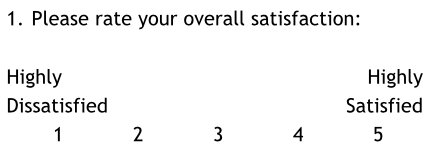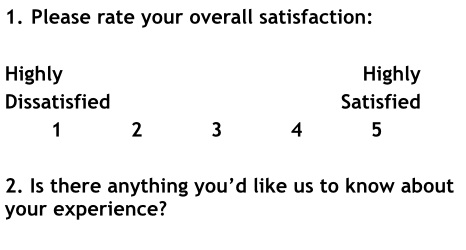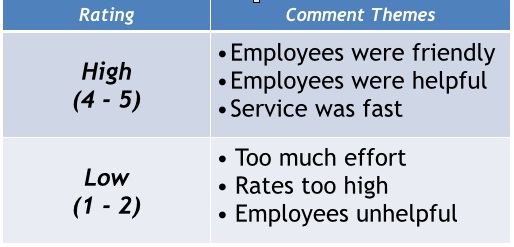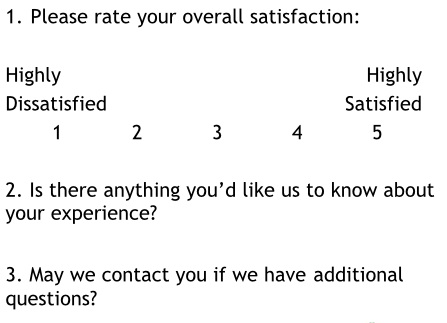“Surveys are too long.”
That’s one of the biggest reasons why customers don’t complete satisfaction surveys. Their time is valuable. Take 100 questions to ask about their experience and people get annoyed.
There’s another problem with long surveys.
Companies don’t know what to do with all that data. There’s just too much of it. So they do nothing. The result is customers were needlessly bothered with 100 irrelevant questions.
I’m pretty sure the term “analysis paralysis” came from a customer service survey.
There is a simpler way. You can design an extremely useful customer service survey with just three questions.
The wording of the questions themselves varies, but the three basic types of questions remain the same:
- What is your overall rating?
- Please tell us more. (Open comments)
- May we follow-up?
The three questions survey ditches the endless stream of useless questions for three insanely useful ones. Let’s break it down:
Question 1: Overall Rating
The first question asks your customer to give your company, product, or service an overall rating. The rating can be converted into a score that makes it easy to report.
The specific question you ask should be determined by your survey’s purpose. A good survey always starts with a clear objective. You can read more about that here.
Here’s an example:

A survey score by itself doesn’t do much good. That’s because it doesn’t tell you what you need to do to make service even better. We’ll need another question to learn that.
Question 2: Please Tell Us More
The second question asks your customers to provide some more information about the answer they gave to question one. This is a free-form comment box that allows them to write whatever they’d like.

These comments are a bit more helpful than a numerical score. Customers are using this box to tell you exactly what they are thinking. Some times, they’ll point out some known issues. Other times, they’ll mention something you hadn’t even considered.
The real magic happens when you combine the results of questions 1 and 2. For example, you might look for themes among customer comments when they provide a high rating versus a low rating. Here’s a sample:

Question 3: Follow-up
Hopefully, customers will use the comment section of your survey to tell you how much they love your company.
What do you do if a customer shares some negative feedback?
That’s where the third question comes in. It asks customers for their permission to be contacted if you have any additional questions. A customer who answers “yes” is giving you an invitation to close the loop.

Two caveats here.
First – you aren’t obligated to contact the customer if you word the question like the example above. It’s generally a good idea to close the loop when customers answer “yes” to this question, even when the feedback is positive. However, you want to preserve some flexibility in the event you get overwhelmed with responses and can’t follow-up with everyone.
Second – you must actually capture the customer’s contact information.
Putting it into Action
I’m in no way implying that all customer service surveys must have three, and only three questions. Rather, I’m challenging you to think twice before making your survey any longer.
And, no matter what questions you ask, you still need to do something with that data.
You can learn more about analyzing survey data in a webinar called How to Analyze and Act on Customer Service Survey Data. The webinar is on Wednesday, March 5 at 10am (PST).



